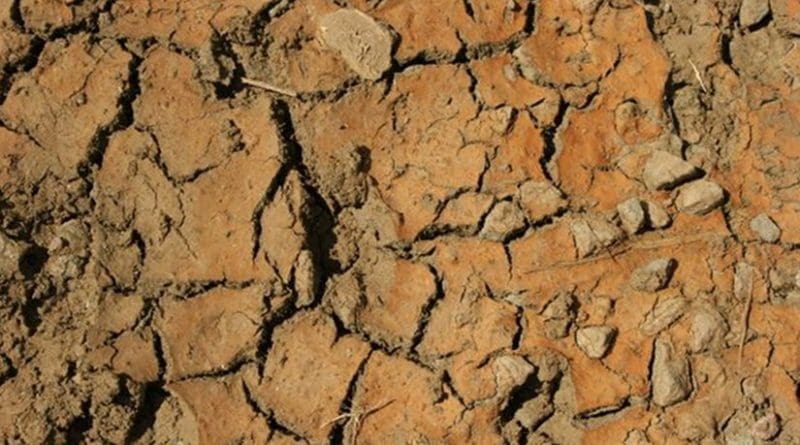Worsening Droughts Till Lead To More Migration In Middle East – OpEd
By Arab News
By Kerry Boyd Anderson*
Throughout human history, people have moved in response to changing climatic conditions. Today, anthropogenic climate change is exacerbating changes in the environment. In the Middle East, which has also experienced rapid population growth, these trends are intensifying migratory flows. The region is very likely to see growing numbers of people seeking new homes and livelihoods in different parts of their countries or even outside of their home nations.
While the Middle East is experiencing multiple effects of climate change, drought is perhaps the most pressing concern. An already arid region, many Middle Eastern countries are struggling to cope with the effects of population growth, years of mismanagement of water resources, the construction of dams by upstream countries, and climate change. In 2017, the World Bank noted that “while population and economic growth will increase water demands, climate change will be the primary driver for the most pronounced changes in surface water stress across the region.” Meanwhile, a NASA study published in 2016 found that “the recent drought that began in 1998 in the eastern Mediterranean Levant region, which comprises Cyprus, Israel, Jordan, Lebanon, Palestine, Syria, and Turkey, is likely the worst drought of the past nine centuries.”
Many countries in the region are experiencing a loss of surface water as well as depleting aquifer resources. The effects can be severe for some communities, especially farming or fishing communities that depend on water for agriculture or fishing. As groundwater or surface water sources that are necessary for survival dry up, entire villages are sometimes abandoned.
Many countries in the region are already experiencing significant and growing internal migration as a result of increasingly severe and prolonged drought. In Iran, people — mostly in rural communities — are leaving areas of Khuzestan, Isfahan, and Sistan and Baluchistan to find work and homes in areas with more water. Iraq has also experienced significant migration from rural to urban areas due to water shortages. Failing livelihoods in parts of the country due to drought have even driven some Iraqis to fight for Daesh in exchange for money. Elsewhere, Syria, Yemen and Jordan have also experienced internal migration as people leave failing farms to seek work in cities.
While much of the migration in response to drought happens within a country, drought can also cause or contribute to cross-border migration. Almost incredibly, war-torn, drought-ridden Yemen not only has internal migration but is also a transit country, as people fleeing drought and other disasters in the Horn of Africa attempt to travel through Yemen in the hope of finding work in the wealthier Gulf states or elsewhere.
Multiple studies have highlighted the role that unprecedentedly severe drought in Syria played in sparking internal migration from rural areas to the cities and then contributed to the social and political tensions that launched the civil war. The civil war in turn created a massive refugee crisis, with more than 5 million Syrians fleeing to neighboring countries and Europe. While it is difficult to disentangle drought from other factors behind conflict, studies conducted in recent years have found that it often contributes to or exacerbates other causes of conflict, which in turn often prompt refugee flows.
As people flee drought — or conflicts in which drought played a role — they often move from places with severe water shortages to places that are in better shape but have limited water resources. For example, this is happening in Iran, where people are leaving hard-hit areas for provinces such as Mazandaran; but Mazandaran is now also experiencing a water shortage itself, according to a report by Radio Farda. The flow of Syrian refugees into Jordan has strained the latter’s already limited resources. Many parts of Iraq struggle with water shortages, making it difficult for people to find better locations within the country. With its own severe water shortages, Yemen is hardly in a position to host large numbers of migrants fleeing drought and other crises in their own countries.
Migration as a result entirely of or partly due to climate change is going to increase in the Middle East and around the world. Governments would be wise to accept that reality and find positive ways to manage shifts in population, including assisting locales with significant population influxes in integrating migrants and managing resources.
Additionally, governments can take other steps to mitigate future climate-related migration. Governments should work together to limit the global temperature rise to 1.5 degrees Celsius. Governments can also improve water management by investing in infrastructure such as pipes to reduce leaking; helping farmers adopt more efficient irrigation methods or to shift to less water-intensive crops; considering the trade-offs involved in allocation of water rights and protecting against corruption; and pursuing sustainable economic development.
• Kerry Boyd Anderson is a writer and political risk consultant with more than 14 years’ experience as a professional analyst of international security issues and Middle East political and business risk. Twitter: @KBAresearch

